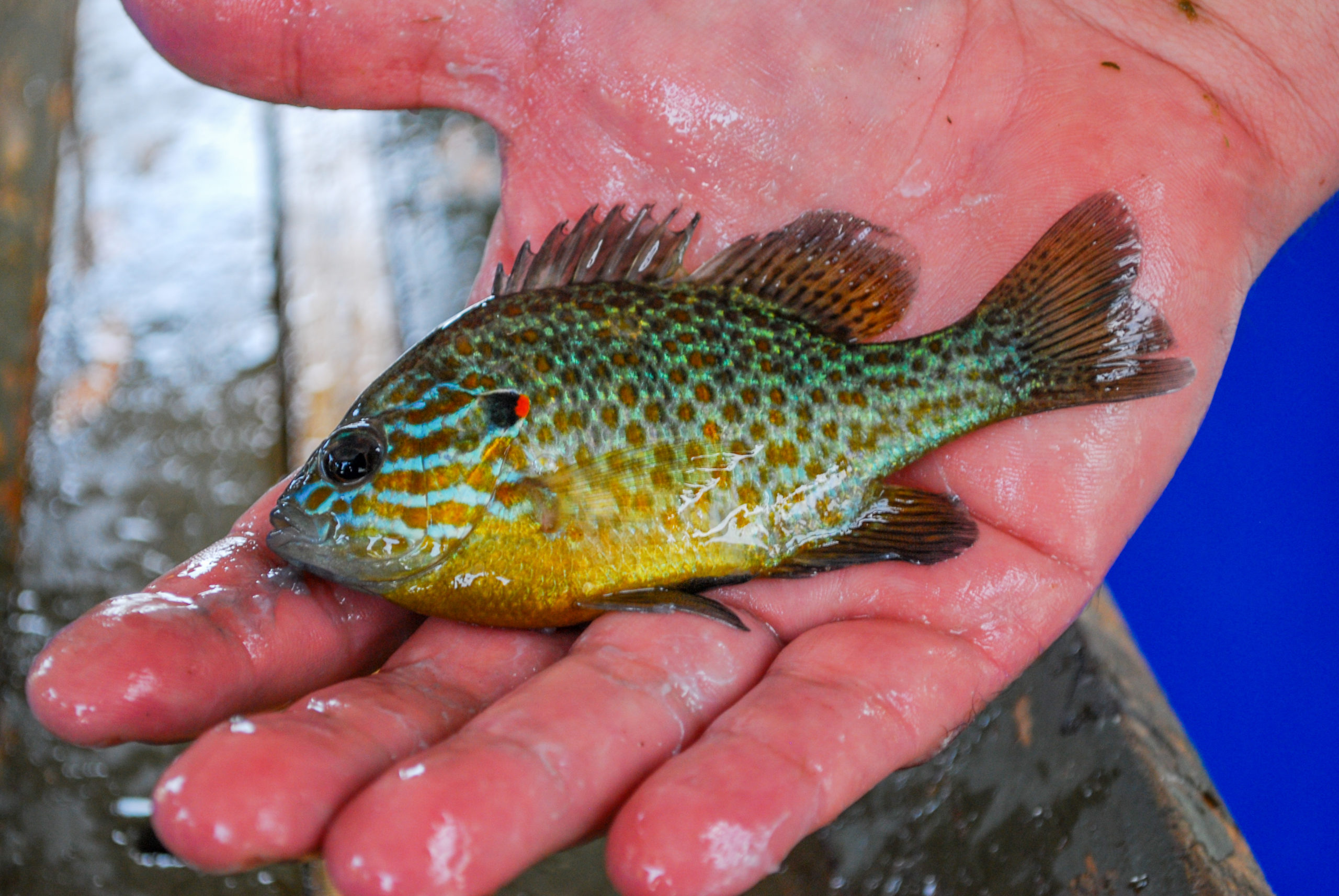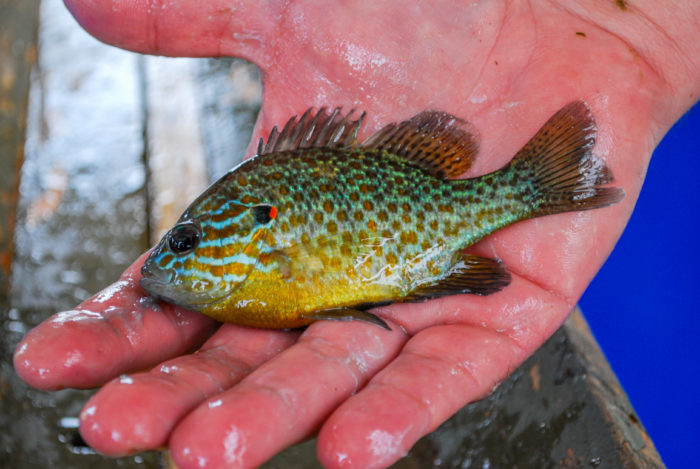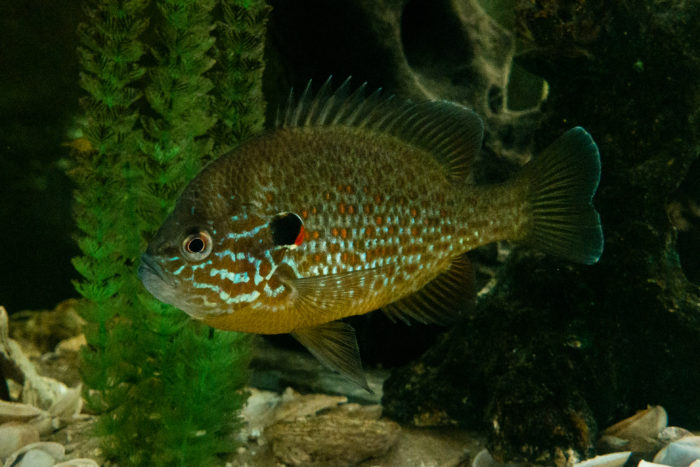
Sea Wonder: Pumpkinseedfish

Photo credit: Matt Rath/Chesapeake Bay Program
Pumpkinseed fish (Lepomis gibbosus) get their name from the shape of their bodies, which resemble the flat, ovular shape of a pumpkin seed. These freshwater fish are part of the sunfish family and are an abundant and easily caught species, which makes them a great starter fish for young anglers in training.
DESCRIPTION
Pumpkinseed fish are bright, beautiful sunfish with a saucer shaped body. They are a mottled orange, blue, and green all over their bodies with wavy horizontal stripes along their cheeks, black earflaps, and a bright red or orange border near the earflap. When fully grown, pumpkinseed fish can grow to be up to a foot long but, on average, are between four and six inches long. They typically weigh one pound or less.
DIET & HABITAT
Pumpkinseed fish are omnivores that feed on small invertebrates like snails, worms, and insects, small fish, tadpoles, and bits of vegetation. They have molar-shaped teeth in their throats that help them in their foraging. They feed throughout the day, scavenging for food in the sediment or at the water’s surface, with their highest levels of activity occurring in the afternoon hours. At night, they rest along the sediment in areas hidden by rocks, logs, or other structures. They aren’t skittish when it comes to feeding opportunities, which makes it easy for fishermen to catch them with worms and other bait. Larger fish, fish-eating birds like hawks, herons, and cormorants, and fish-eating mammals like raccoons are all natural predators of pumpkinseed fish.
The pumpkinseed fish is most common in shallow, protected tributaries like lakes, ponds, reservoirs, streams, creeks, and river coves. Their preferred environmental conditions include quiet, slow-moving waters with lots of vegetation and sandy, muddy, or gravel bottoms. They spend much of their time near the shoreline and can venture into brackish waters on occasion.
This species’ natural distribution occurs along the Atlantic from New Brunswick in Canada down the coast of South Carolina, and in the heartlands of North America through freshwater bodies from Iowa to Pennsylvania. Over the years, humans have introduced pumpkinseed fish to areas outside of their natural range, including Georgia on the east coast, North Dakota and Manitoba Canada, and along the Pacific northwest. They have also been introduced to waters in Europe, where they are considered invasive and may outcompete native species.
LIFE HISTORY
Pumpkinseed fish spawn in the warmer months, from May to July, when waters are at 68 degrees Fahrenheit or above. Males build nests in shallower waters in the late spring by sweeping out shallow, ovular nesting holes in the sediment. The nest is near other males and create large colonies where females can lay hundreds of eggs into a nest and males can fertilize and guard them by fanning their tail and warding off predatory insects. Females leave immediately after spawning. Three to five days later, the eggs hatch and the young fish swim into the shallows where they can hide in beds of underwater grasses or similarly hidden areas. In their habitat, pumpkinseed fish can live between six and eight years, with generally longer lifespans in human care.
THREATS & CONSERVATION
Pumpkinseed fish are of “least concern” by wildlife experts and populations are abundant. Where they are invasive, managers and governments may prohibit breeding of the species for display and encourage fishing them. Possible future threats to the species throughout its range include threats to their habitats, including runoff pollution, development, and climate effects.

Photo credit: Will Parson/Chesapeake Bay Program
